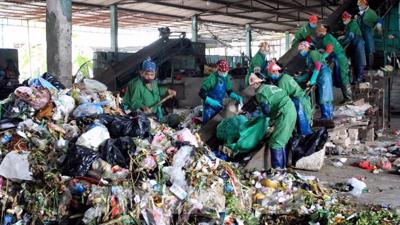Potential of the private sector awakened
Mr. Le Chi Phuc, CEO of SGI Capital, tells Vietnam Economic Times / VnEconomy’s Phan Linh how institutional reform can maximize the potential of the private sector and drive sustainable growth opportunities for Vietnam over the next decade.
The private sector is considered one of the key drivers of Vietnam’s economic growth. What are your thoughts?
After decades of observing listed companies, we have seen that those with a high level of State ownership tend to have lower capital efficiency and slower growth rates compared to private enterprises.
State-owned enterprises (SOEs) often hold significant land resources and enjoy monopolistic positions, yet their operational efficiency, cost control, innovation, and ability to seize opportunities are far lower than those of private enterprises. Just over a decade ago, the leading companies in most industries were SOEs. Today, private enterprises have risen to the top in many sectors, demonstrating strong competitiveness not only domestically but also in replacing imports and expanding into global markets.

We frequently compare Vietnamese private enterprises with their counterparts in ASEAN and worldwide. Despite operating in a business environment that is not always favorable and receiving limited policy support, many Vietnamese private enterprises perform remarkably well, posting strong growth rates. In fact, when assessed against various financial efficiency and growth criteria, some even surpass regional standards and are on par with top global corporations in their industries.
Compared to other countries in the region, Vietnamese entrepreneurs are highly intelligent, dynamic, and quick to adapt. Therefore, if the government implements mechanisms to further activate the private sector, Vietnam could achieve even higher growth rates.
Will Vietnam’s future growth drivers turn out to be institutional reform, the private sector, and workplace productivity?
In this new era, we have reason to hope for strong institutional reforms. In just the past few months, we have witnessed a high level of determination for change. Things are progressing rapidly, with groundbreaking policies that have never been considered since Vietnam’s economic opening. These include initiatives such as streamlining the government apparatus, digitalizing administrative management, establishing digital asset exchanges, building international financial centers, and developing special economic zones.
This is not just about constructing buildings and central hubs or meeting hard infrastructure needs. More importantly, it is about institutional reform, creating a more open legal framework that facilitates free capital flows, emphasizes technology and high productivity, and offers comprehensive incentives in taxation, fees, and labor policies. If realized, these initiatives could mark a turning point, stimulating domestic investment while attracting additional foreign capital into Vietnam.
In the short term, any major change will have both positive and negative impacts. However, I believe that strong institutional reform will make Vietnam’s economy more dynamic and improve capital circulation. The key is to direct capital into areas that enhance productivity and ensure sustainable growth quality.
One important lesson from both Vietnam’s past and other countries’ experience is that accelerating public investment disbursement while simultaneously easing monetary policy can immediately drive GDP growth. Infrastructure development can also stimulate a vibrant real estate market, attracting speculative capital through debt financing. While this model can sustain high growth for two to three years, it lacks long-term sustainability, as it carries risks of asset bubbles, inflationary pressure, and exchange rate instability. Therefore, the quality of growth matters far more than just the growth figures.
To achieve the government’s target of 8 per cent economic growth in 2025, the banking system must supply approximately VND2,500 trillion ($100 billion) in credit to the economy, equivalent to credit growth of 16 per cent. How would you assess the challenges and opportunities that banks will face this year?
Looking at the banking sectors of countries that have gone through similar economic cycles as Vietnam, such as Thailand, Malaysia, and China 15-20 years ago, credit growth slowed to around 10-12 per cent a year after a period of economic boom.
Credit growth must be in keeping with the economy’s absorption capacity, as reflected in the credit-to-GDP ratio. Vietnam’s ratio has risen to approximately 140 per cent, and if corporate bonds held by banks were to be included, the figure is even higher. This is a significant number compared to economies of similar size or even those that were ahead of Vietnam by 15-20 years in development terms.
Every 1 per cent GDP growth requires 2 per cent credit growth. With projected credit growth of 16-20 per cent per year in 2025 and beyond, the credit-to-GDP ratio will rise even further. This presents a major challenge for the banking sector in the years to come.
From an investor and market observer’s perspective, I believe the banking system has limited room left for credit expansion. Looking back at the period of interest rate cuts during Covid-19, in 2021 and 2022, credit growth was already quite high, at 15-16 per cent. In 2022, banks exhausted their credit limits in the first half of the year. In 2024, banks continued to lend at a rate about 5 per cent higher than deposit growth, preventing improvements in their liquidity and capital adequacy ratios. At the end of 2022, an external interest rate shock led to a sharp exchange rate surge, combined with the corporate bond crisis and the SCB incident, pushing the banking system into a liquidity crisis.
Currently, the global and macro-economic environment remains volatile and full of risks. If banks do not accelerate deposit mobilization and reduce their loan-to-deposit ratio (LDR), they will struggle to maintain liquidity while expanding credit as expected, and they will also be vulnerable to sudden shocks.
However, reducing the LDR is also a challenge for banks, as they must simultaneously maintain low interest rates while global interest rates, especially in the US, remain high. When deposit interest rates are low, bank savings become less attractive to both individuals and businesses. Capital will instead flow into other, more profitable investment channels such as gold, real estate, USD holdings, or even cryptocurrencies.
How would you assess the relationship between credit growth quality and the economy’s capacity to absorb capital?
We have conducted statistical analyses on the borrowing demand of both listed and non-listed enterprises across the manufacturing, trade, and service sectors. The results indicate that corporate borrowing demand has been on a continuous decline over the past 5-7 years.
The main reason is that well-performing publicly-traded companies in manufacturing, trade, and services have scaled up their operations, strengthened their market position, and built strong cash flows. They have also accumulated sufficient equity to reinvest and expand without relying heavily on loans. Furthermore, their growth rates have slowed compared to the high average recorded between 2005 and 2015, leading to a decreased need for financing.
Looking at credit growth data from the banking system, we see that the highest credit expansion has been concentrated in two sectors: consumer lending, and real estate (including mortgages and loans to property developers).
I believe that capital absorption capacity in manufacturing, trade, and services may remain low in the immediate future for two reasons: (1) the global economy has yet to show significant signs of recovery, and trade tensions could disrupt international commerce; and (2) domestic consumption is recovering but at a slow pace, making businesses cautious about investing in production and expansion.
As a result, it is likely that credit will continue to flow into the real estate sector or industries related to infrastructure development.







![[Interactive]: Economic overview - April 2025](https://media.vneconomy.vn/400x225/images/upload/2025/05/06/5a245778-67b1-4874-a8dc-21f8cfed62a6.png)